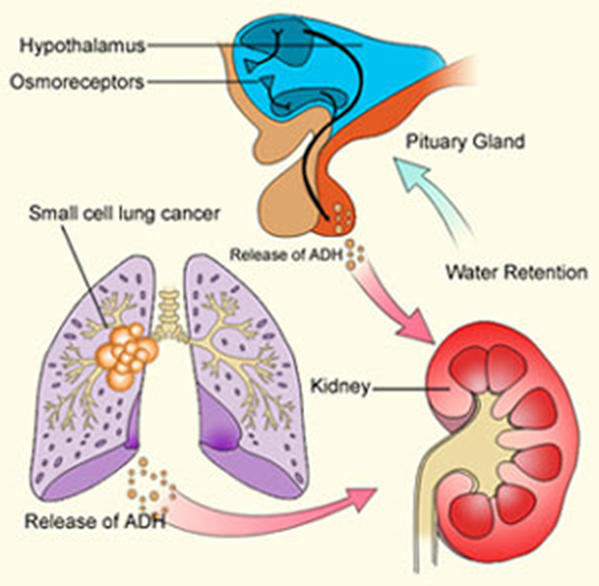A nurse is providing education about insulin management to a client newly diagnosed with type 1 diabetes mellitus. Which of the following statements by the nurse about injection site selection is accurate?
Injections will work most quickly when given in the thigh.
Injections will work most quickly when given in the upper arm.
Injections will work most quickly when given in the buttocks.
Injections will work most quickly when given in the abdomen.
The Correct Answer is D
Choice A reason:
Injections in the thigh are absorbed more slowly compared to the abdomen. The thigh is a common site for insulin injections, but it does not provide the fastest absorption rate. The absorption rate can be influenced by physical activity, as exercise can increase blood flow to the muscles, potentially speeding up insulin absorption. However, under normal conditions, the thigh is not the fastest site for insulin absorption.
Choice B reason:
Injections in the upper arm have a moderate absorption rate. The upper arm is another common site for insulin injections, but it is not the fastest. The absorption rate from the upper arm is generally faster than the thigh but slower than the abdomen. This site can be convenient for injections, especially for those who find it difficult to reach other areas.
Choice C reason:
Injections in the buttocks have the slowest absorption rate among the common injection sites. The buttocks are less commonly used for insulin injections due to the slower absorption rate and the difficulty some individuals may have in administering injections in this area. The high fat content in the buttocks slows down the absorption of insulin.
Choice D reason:
Injections in the abdomen provide the fastest absorption rate for insulin. The abdomen is the preferred site for many people with diabetes because it has a large surface area and is easy to access. The insulin injected into the abdominal area is absorbed quickly into the bloodstream, making it the most effective site for rapid-acting insulin. This is particularly important for managing blood sugar levels around meal times.

Nursing Test Bank
Naxlex Comprehensive Predictor Exams
Related Questions
Correct Answer is B
Explanation
Choice A Reason:
This statement is incorrect because a hemoglobin A1C level of 9% indicates that the client’s blood sugar levels have been consistently high over the past two to three months. Hemoglobin A1C is a measure of average blood glucose levels, not low blood sugar levels. Therefore, it would be inappropriate to suggest that the client has dangerously low blood sugar levels based on this result.
Choice B Reason:
This statement is correct because a hemoglobin A1C level of 9% indicates that the client’s average blood sugar levels are high. Hemoglobin A1C reflects the average blood glucose levels over the past two to three months. A normal A1C level is below 5.7%, while an A1C level between 5.7% and 6.4% indicates prediabetes, and an A1C level of 6.5% or higher indicates diabetes. Therefore, an A1C level of 9% clearly shows that the client’s average blood sugar is high.
Choice C Reason:
This statement is partially correct but not the most appropriate. While it is true that a high hemoglobin A1C level can indicate that blood sugar levels are high after meals, it is not specific enough. Hemoglobin A1C measures the average blood glucose levels over a period of time, not just after meals. Therefore, the statement “Your average blood sugar is high” is more accurate and appropriate.
Choice D Reason:
This statement is incorrect because it is too vague and does not provide specific information about the client’s blood sugar levels. While a high hemoglobin A1C level can indicate variability in blood sugar levels, it primarily reflects the average blood glucose levels over the past two to three months. Therefore, it would be more appropriate to state that the client’s average blood sugar is high.
Correct Answer is A
Explanation
Choice A: Fasting blood glucose of 140 mg/dL
A fasting blood glucose level of 140 mg/dL is above the normal range (70-99 mg/dL) but may indicate some improvement in beta cell function if it was previously higher. In type 2 diabetes, beta cells in the pancreas are responsible for producing insulin. When beta cells start to restore their function, they can produce more insulin, which helps lower blood glucose levels. However, a fasting blood glucose level of 140 mg/dL still indicates that the client has diabetes and needs to continue managing their condition.
Choice B: Client reports smoking cessation
Smoking cessation is a positive health behavior and can improve overall health, including cardiovascular health, which is often compromised in individuals with diabetes. However, it does not directly indicate the restoration of beta cell function. Beta cell function is specifically related to the pancreas’s ability to produce insulin, and smoking cessation, while beneficial, does not directly impact this.
Choice C: Weight gain of 5 lb
Weight gain can have various implications for a person with type 2 diabetes. While modest weight gain might indicate improved nutritional status or muscle mass, it does not directly indicate the restoration of beta cell function. In fact, weight gain can sometimes worsen insulin resistance, making it harder for beta cells to function effectively.
Whether you are a student looking to ace your exams or a practicing nurse seeking to enhance your expertise , our nursing education contents will empower you with the confidence and competence to make a difference in the lives of patients and become a respected leader in the healthcare field.
Visit Naxlex, invest in your future and unlock endless possibilities with our unparalleled nursing education contents today
Report Wrong Answer on the Current Question
Do you disagree with the answer? If yes, what is your expected answer? Explain.
Kindly be descriptive with the issue you are facing.
